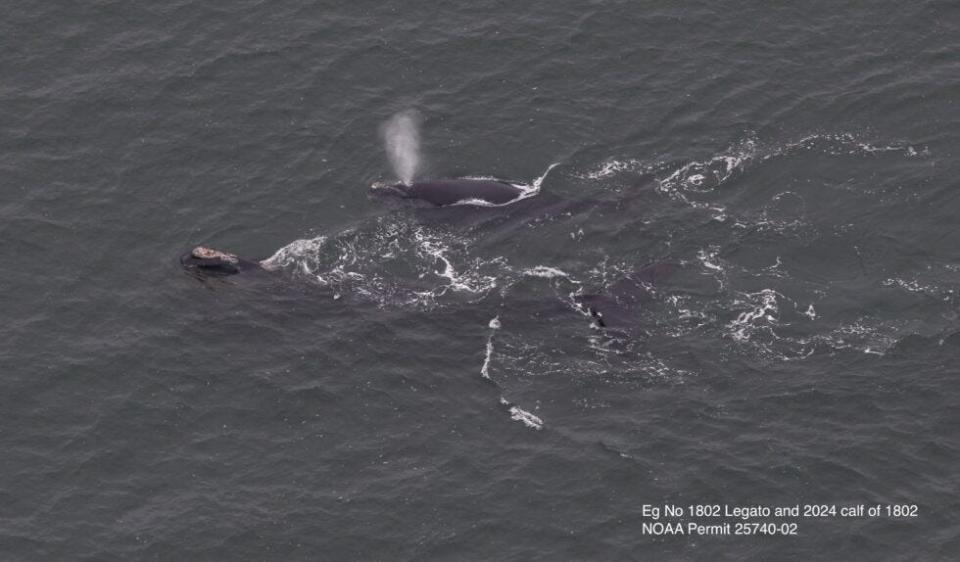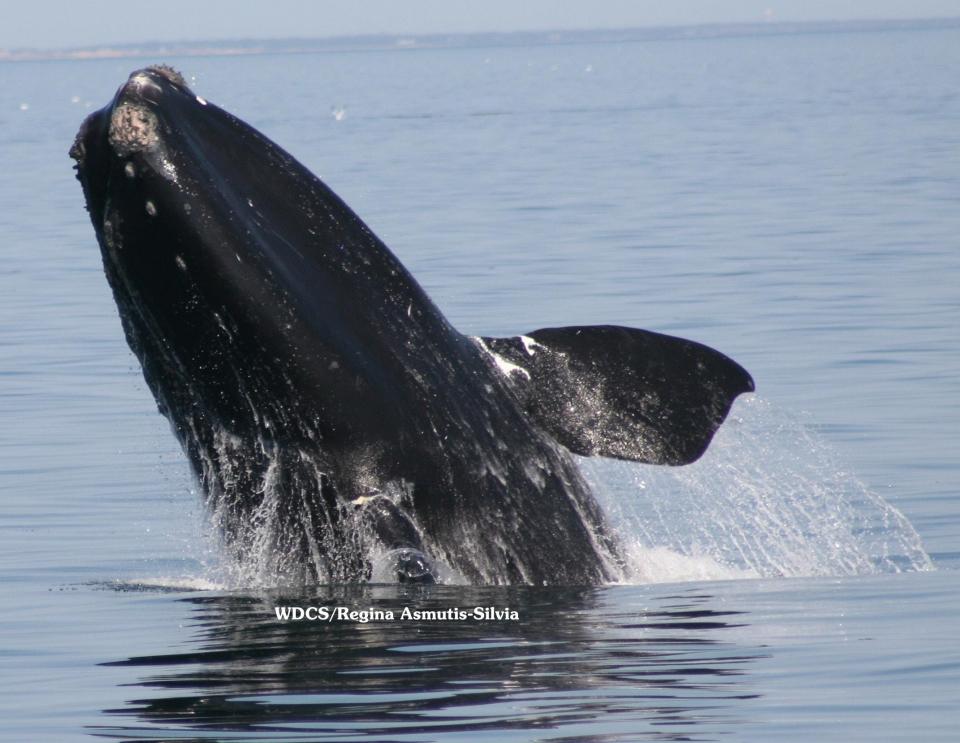Right whale calf and mom sighting in Marshfield marks 1st of the season
A North Atlantic right whale and her calf spotted in the waters just north of Marshfield this week marks the first such sighting in the state this year, according to the Center for Coastal Studies, whose aerial team spotted the pair
The Provincetown-based center identified the mother as 36-year-old Legato, the daughter of another identified whale named Staccato.
Legato gave birth to her calf in December, and the two whales were first sighted together by Florida’s Fish and Wildlife Research Institute on New Year’s Eve, the center said.
This is Legato’s fifth documented calf. Previous calves include a male born in 2003 who is presumed dead after last being seen in 2011; a female born in 2006 who died in the calving grounds; a female born in 2008 and last seen in Cape Cod Bay in 2022; and a male born in 2011 that has been seen many times in Cape Cod Bay this winter.
Ryan Schosberg, an aerial observer and right whale researcher from the center explained how the April 1 sighting was made.
“We were just finishing a survey track line when we saw a right whale feeding less than a mile from the beach off North Marshfield. We flew over to document the animal and all cheered in excitement when a little calf popped up by its side," he said. "It’s always a relief to see right whale mothers arriving safely in Cape Cod Bay with their calves.”
More: Ships speeding off Cape Cod now get texts to slow down, protect right whales

North Atlantic right whales calve off the southeastern coast of the U.S. in winter before migrating north to New England and Canadian feeding grounds, according to information from the center.
Cape Cod Bay is host to one of the largest feeding aggregations of right whales during winter and early spring. This season, researchers from the Center for Coastal Studies have already observed 123 individual right whales in the bay.
Why are right whales endangered?
Ship strikes are among the greatest threats to North Atlantic right whales' survival, the center said. During right whale season, the state required vessels travel no faster than 10 knots in coastal waters and Cape Cod Bay where the whales gather.
Dr. Charles “Stormy” Mayo, director of the center’s Right Whale Ecology Program, said right whale mothers and their calves are often sighted in Cape Cod Bay during April and May. Their arrival follows what he characterized as a difficult journey through sometimes dangerous sea conditions.
While the mothers nurse their calves during the migration, they do not feed until arriving in the food-rich waters around Cape Cod, he said.
Preparing for whales: Caterpillar, Spoon and Tux among 31 right whales spotted east of Cape, Nantucket
“Cape Cod Bay is a very significant place for right whales to bring their calves," he said. "Here they find protected, calmer waters, and an abundance of food. It must be a relief, no wonder they hang out here for days or weeks."
How many right whales exist?
North Atlantic right whales are endangered, and their population is estimated to be fewer than 360 individuals.

It is illegal for boaters, kayakers, paddle-boarders, swimmers and light aircraft and drone pilots to approach a North Atlantic right whale within 500 yards without a federal research permit.
This article originally appeared on The Patriot Ledger: Endangered North American right whale and calf spotted near Marshfield

